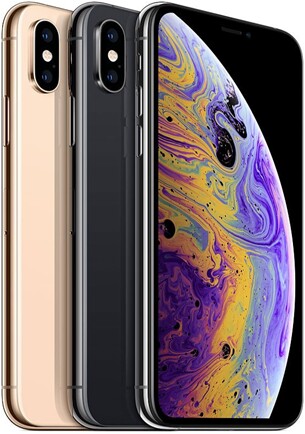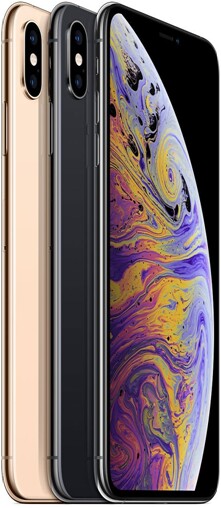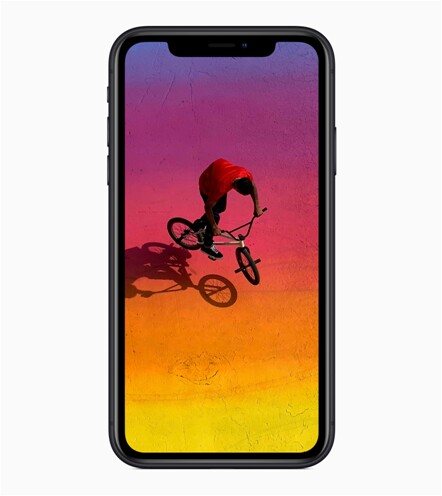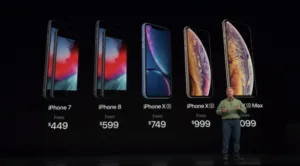Apple introduced three new models of iPhones on September 12, 2018. Two of those models came with OLED displays and one with LCD. Apple’s star power has been setting smart phone display industry trends over the years. The new introductions may also have a significant impact.

The OLED display in the iPhone Xs is very similar to the iPhone X – 5.8″ size, 2436 x 1125 pixel format and 458 PPI (pixel per inch) with an introductory price of $999. Apple truly crossed the boundary of a 6″ size in the iPhone Xs Max where the display shifted to have a 6.5″ size, with 2688 x 1242 pixel format and 458 PPI. Apple was able to fit the larger screen size display in the same footprint as the iPhone 8Plus by using a super narrow bezel design. Display technology also shifted from LTPS LCD to flexible OLED. The company pushed the price of iPhone Xs Max up to $1099.
By this move, Apple has established OLED display as the most advanced technology for next generation smartphones and models that can command higher prices even in a contracting market. The LTPS LCD panel based-iPhone XR also crossed the 6″ size boundary. It comes with a 6.1″ display (in 1792 x 828 pixel format and 326 PPI). The starting price is $749 to meet competitive pressure in the mid-range. Does that mean that LTPS LCD will be confined mostly to mid-range and low-end products from now on?
 iPhone XS – with a 5.8@ flexible OLED display
iPhone XS – with a 5.8@ flexible OLED display
Flexible OLED gets a boost in the high-end
Manufacturers have been working relentlessly to fit in larger size displays in a smaller form factor by shifting into “full screen” edge to edge design (with 18:9 or 18.5:9 aspect ratios and touch integration). The screen to body ratio has been increasing from 70% to more than 80%. The new aspect ratio 18:9 or 18.5:9 enhances video watching, movie viewing, game playing and multitasking with split screens. The trend towards “full screen” format also requires super narrow bezel or bezel-less designs and flexible OLED is more suitable for “ full screen” designs.
Samsung has been in the forefront, using flexible displays for its bezel-less infinity display design in its Galaxy products. Apple’s adoption of flexible OLED, especially with two models for their flagship products with higher introductory prices, really reinforces the trend for the industry. But they are not alone. At the IFA 2018 exhibition, multiple smartphone vendors including Sony, Huawei, HTC, ZTE and many others introduced smartphones based on flexible OLEDs with diagonals above 6″. Samsung Display has been the dominant supplier for flexible OLED with more than 90% share of the market. LG Display, BOE and many others are starting to ramp up new capacity for flexible OLEDs. This will give a boost to flexible OLED adoption rates. But the manufacturing process is complex; with lower yield rates. This will continue to keep cost high in the near term, limiting the display to high-end flagship products.
 The iPhone Xs Max uses a 6.5″ flexible OLED display
The iPhone Xs Max uses a 6.5″ flexible OLED display
LTPS LCD serving the mid-range
LTPS LCD suppliers have been also working intensely to reduce bezel width and shift towards full screen formats. They have been able to use COF (Chip on film) solutions to reduce bezel size and increase the adoption of 18:9 aspect ratio displays to meet smartphone design needs. Companies such as AUO, Tianma, BOE, JDI, Sharp and others have invested in 6th Gen LTPS capacity. Higher capacity, fierce competition and a slow down in the smartphone market, combined with Apple’s adoption of flexible OLED display, has resulted in aggressive price reductions for LTPS panels. These reductions have enabled the technology to meet mid-range product price points.
Apple’s new iPhone XR product is a true indication of that trend, where design and improvement can be seen at mid-range price points. In recent years, mid-range smartphone products have seen stronger growth than other parts of the market. In spite of Apple’s introduction of two OLED models, Apple’s LCD iPhone unit sales are expected to be higher than for the OLED products. In general, OLED is gaining market share in the smartphone market. But LTPS LCD is also taking market share away from a-Si models, further down the market. That trend, combined with new designs and more competitive price points, have helped LTPS LCD supply growth.

MiniLED backlight can empower LTPS LCD to compete at the high end
MiniLED backlight can empower LTPS LCD by offering higher contrast by supporting local dimming, higher brightness, faster response time and can reduce certain performance gaps with OLED such as contrast ratios. Tianma showcased a 6.4″ HDR LTPS LCD with a miniLED backlight with 1000 cd/m² of peak brightness and 3,000,000:1 maximum local contrast. MiniLED LCD costs are still high, but the technology has strong potential to compete with OLED at the high end by providing better performance. Suppliers will really need to reduce costs and increase productions in order to exploit this small window of opportunity.
Flexible OLED can get a higher boost with foldable phones
Samsung is widely expected to introduce foldable smartphone by the end of 2018. A big advantage of a foldable display is the ability to have “thin light unbreakable larger displays in a smaller form factor”. Foldable smartphones could truly showcase the differentiation between flexible OLED and other display technology, especially LCD. Foldable display curvature will need to be 1mm – 3mm thickness and needs to provide the ability to bend multiple times without degradation. This has been a major challenge for the industry.
Most display industry people believe foldable phones can only be ready for high volume in 2019, as the technology still needs to mature. Still, the introduction of foldable smartphone by the end of this year could give a real boost to flexible OLED display technology, increasing its adoption rate.
Apple’s recent introduction of two OLED model iPhones has established OLED display as the most advanced technology for next generation smartphones and one that can command higher prices even in a contracting market. It will help flexible OLED displays to gain market share. Flexible OLED is poised to dominate the smartphone display market for the next few years with differentiated design flexibility, foldable phones, thinner form factors, higher contrast, faster response times and even lower power consumption. New fab capacity from China in the next few years may lead to aggressive price reductions. But in the near future, high cost will limit the display more towards high end products. LTPS LCD may need the help of miniLED backlight to increase performance and compete effectively with OLED at the high end. – Sweta Dash
Sweta Dash is the founding president of Dash-Insights, a market research and consulting company specializing in the display industry. For more information, contact [email protected] or visit www.dash-insight.com

